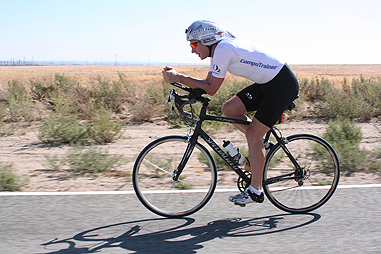
Going around the island is a pretty popular choice for a full weeks cycling trip in Taiwan.
Whole families, young folks, old folks, you name it, many have tried.
I’d say an average trip goes for 10 days or so.
So how about completing the whole thing in just 48 hours?
Route Planning
In terms of ease, taking the outermost roads the whole way around the island is the most sensible.
These roads are the flattest and the straightest. Roads that head off into the hills involve longer distances and more climbing.
The trip needs to start on the outermost roads. When the timing is tight, it’s necessary to cut out any excess travel to and from the coastal road. Timing of the route must start on the actual route and exclude time from home to the route. My house is really close to the route so only 15 minutes to the starting point.
Here’s the distances I worked out for a counterclockwise trip:
Start in Jiali – 0km
Jiali to Oulanbi – 195km
Oulanbi to Suao – 411km
Suao to Guandu bridge – 179km
Guandu bridge to Jiali – 310km
GRAND TOTAL – 1095km
So I’ll use 1100km as the reference point. Google Maps is fairly accurate with distances, so that’s it.
Average Speed
So, you get 48 hours to complete 1100km.
1100km divided by 48 hours = 23km/h (rounded up) average
My last ride to Taipei and back was 667km, completed in 33 hours (including breaks), which works out to about…
20km/h…
Too slow to circumnavigate the island in 48 hours.
But, 3 hours were spent off the bike eating, taking photos, etc. So 667km in 30 hours gives…
23km/h…
But that’s doing without any breaks from the bike and doesn’t include hills.
So what can I do to get my speed up?
Increasing Average Speed
So without any time for excessive training, how do I get my speed up without me actually being fitter and stronger?
There will be more hills in a full circumnavigation, and those will work against me. Fortunately, the hills are not mountains, so the speeds going down will not be hindered by tight bends and excessive braking.
Here are the tactics for increasing my average speed.
- Eat on the bike & take food on the bike
- Plan fuelling stops
- Monitor average speed more closely
- Avoid big cities and traffic lights
- Use a navigation system
Eat On The Bike

Eating on the bike is okay, just have to eat finger food. The seaweed covered rice triangles from 7-11 are cool for that. They are filling, and rice is safe on the stomach and high in carbs.
Need a container for the front of the bike to hold the food. A randonneur style handlebar bag is necessary so I can get to the food without stopping to get something out of the panniers. Also, the saved time from not stopping far outweighs having the extra weight on the bike.
Planned Fueling Stops
Typically I just stop when I need food. But that’s pretty random, and sometimes it will mean waiting too long after I need a refill of either food or water. There are plenty of convenience stores, but I’ll need to actually plan ahead where I want to fill up, avoiding looking and searching. The more certainty to the plan, the less wasted time there will be.
Monitor Average Speed
I believe I can keep the average speed up without any extra “effort”. This will simply take focus, especially away from any pain building up. With a controlled speed I won’t “hit the wall” but I need to monitor my food and drink intake carefully too.
The 667km ride I was able to pull off a similar average speed in the last 4 hours as I had in the first 4 hours, I simply had to dig deep and ignore the pains, mostly sitting pains, that were bothering me so much.
Avoid Traffic and Traffic Lights

Big cities make riding slow. Traffic lights and traffic all work against average speeds. Fast riding speed that comes from fitness helps, but good route planning and reduced stops are essential for making higher speeds pay off well.
Navigation System (Don’t Get Lost)

Using a navigation system is just about not getting lost (wasted time). I’ll need to investigate this more, and I’d have to sort out how to power any such devices for such a long period of time. Most electronics will last up to 12 hours, doing what they’re supposed to do. That’s not long enough.
A dynamo hub, with a usb charger looks like the best option, but is pretty costly for such a simple device. However, they are light and efficient, and will not run out of power at the speeds I’ll be going.
The Plan
I want to do this before the year is out. That gives me three months.
Get essential equipment like seat and handlebar bag sorted out. Navigation system is not essential, just a luxury.
Then there’s probably one other long ride, of perhaps 800km to make sure my equipment is all okay.
Now I just need to get these done.
Any ideas, suggestions, route tips or otherwise? Leave a comment below.